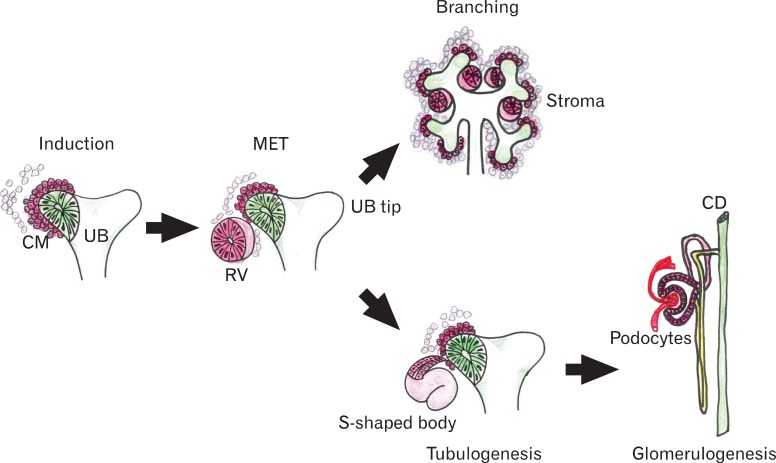Fig. 2.
Scheme of renal developmental processes. Kidney organogenesis depends on a series of reciprocal inductive interactions between the ureteric bud (UB) and metanephric mesenchyme (MM). Signals from the MM initiate kidney development by inducing formation of the UB from the Wolffian duct. The UB invades the MM and undergoes a series of repetitive branchings under the influence of mesenchymal signals. In turn, the newly formed UB induces the MM that surrounds it to condense around its tips. The condensed mesenchyme (CM) successively differentiates into pre-tubular aggregates, and these structures undergo a mesenchymal-to-epithelial transition (MET) to form renal vesicles (RVs), which then proliferate to give rise to comma- and S-shaped bodies, and then nephrons. Parallel to this differentiation process, the distal part of the S-shaped bodies fuses with collecting ducts, and the proximal parts of these structures become highly vascularized and form glomeruli.

